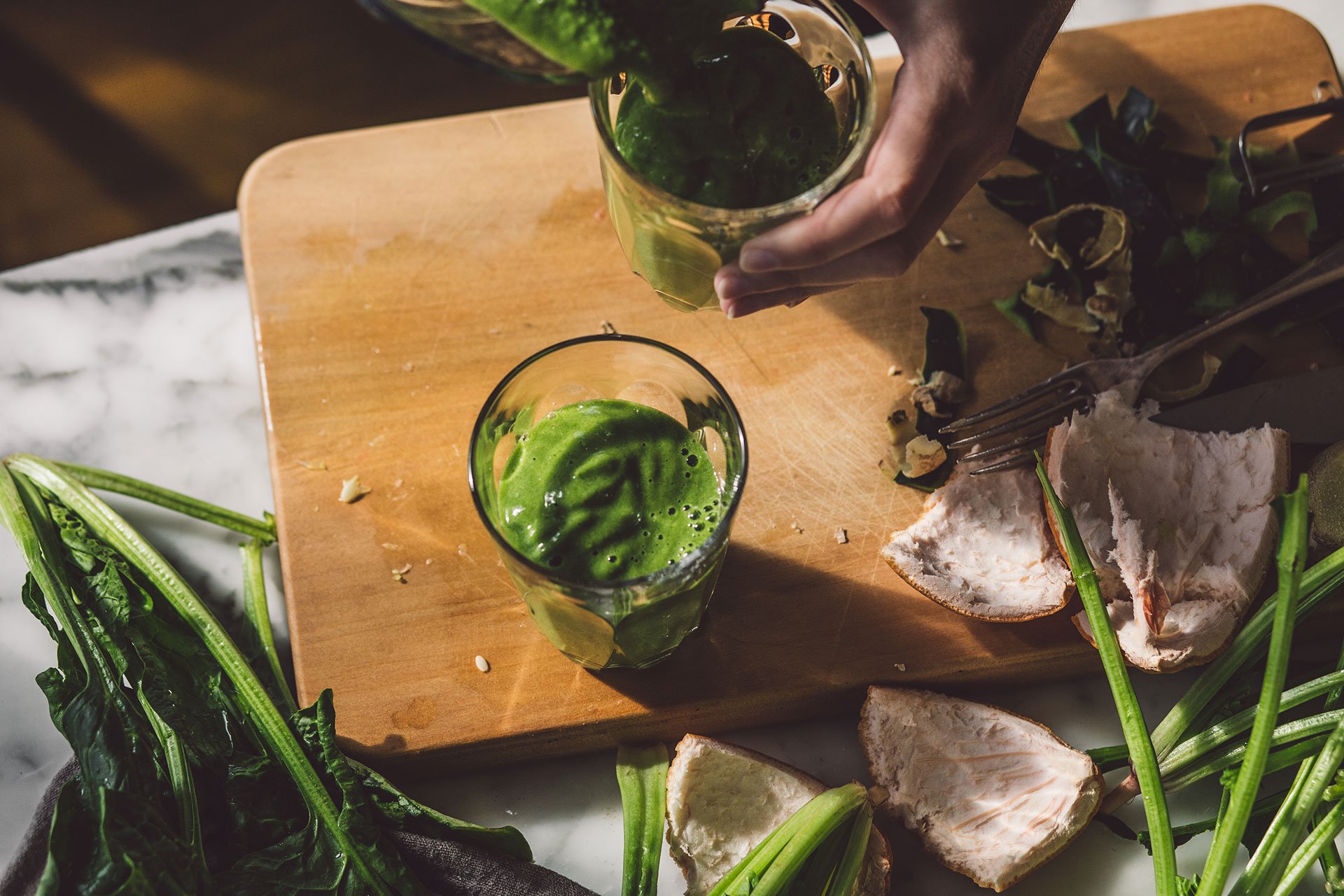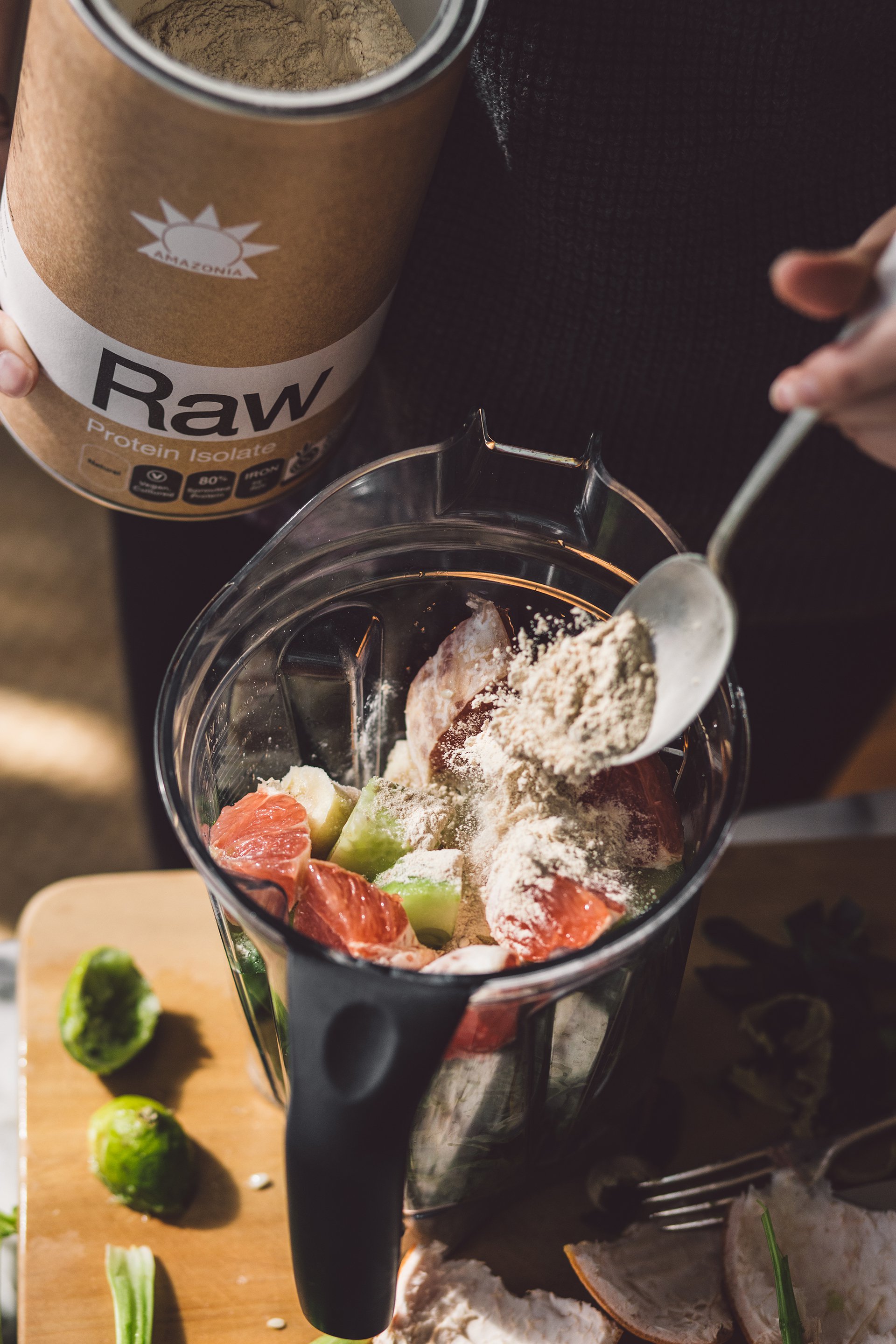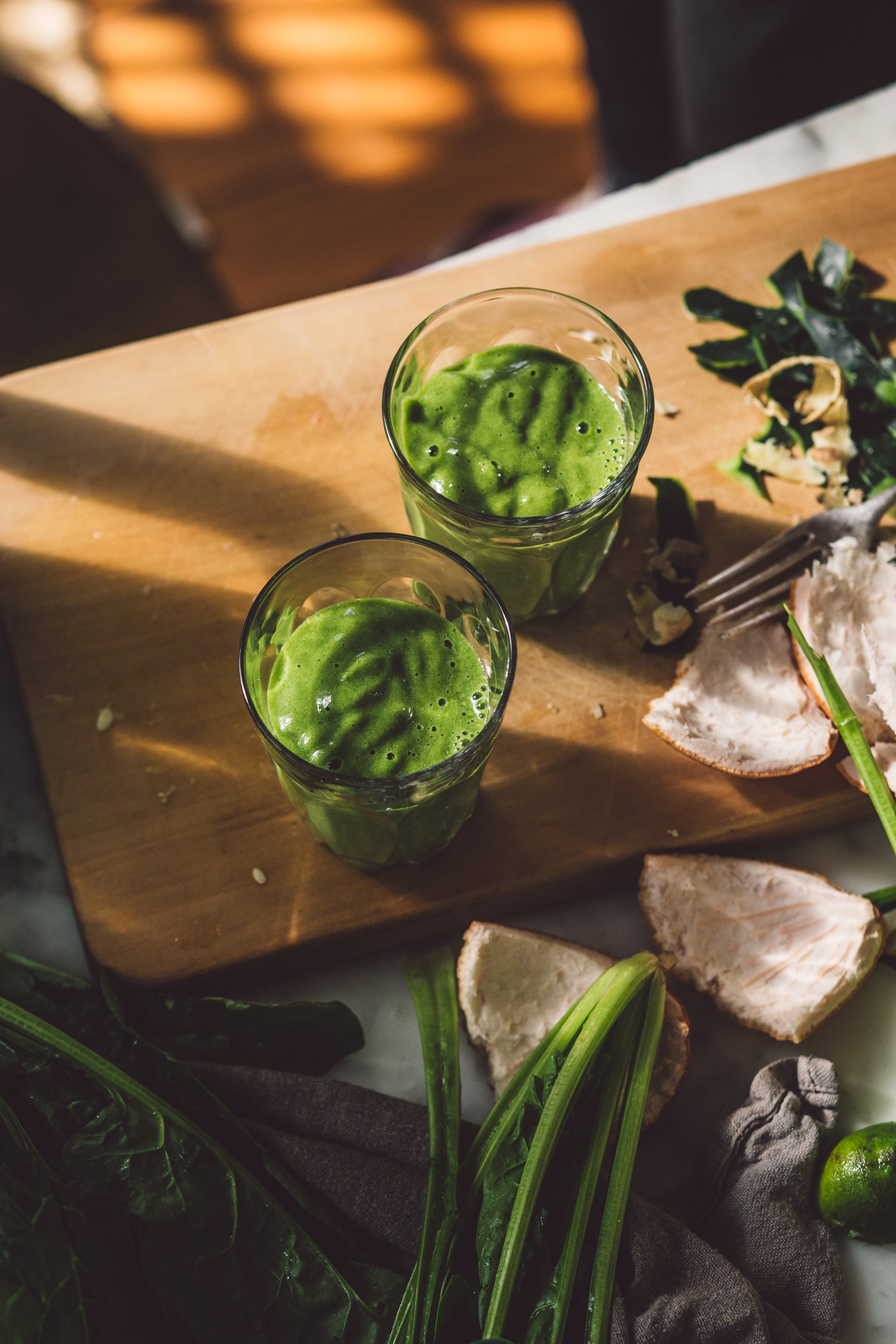What greens are ideal to put in a smoothie?
Since we’re publishing this one in our winter months, consider green smoothies your drink of choice all summer and beyond! And so depending on where you are reading this from, your seasonal greens will look different, so adapt to what you have locally available. If you are familiar with botany, you could explore your edible weed options. And if not, locate a foragers guide for your country and commit to the ritual of foraging and weed appreciation. My favourite plant-based cafe, Little Bird Kitchen, makes an incredible creamy green smoothie from foraged edible weeds. While kale and spinach are mainstay ingredients, green smoothies are also a wonderful way to use up those fresh herbs that might have seen better days sitting in your produce draw! Embrace variety, start here:
— Kale Loaded with powerful antioxidants like Quercetin and Kaempferol, both among the most ubiquitous polyphenols, kale is also an excellent source of Vitamins A, K and C.
— Spinach Much like kale, offers similar nutrients, super high in Vitamins A and K though tends to be more cost effective; in particular, if you’re not purchasing baby leaves.
— Arugula Yes, salad greens, think rucula, salad rocket, and Italian cress, these peppery greens contain abundant protective phytochemicals, electrolytes and Vitamins C, K and A.
— Swiss Chard Energising, chard provides an ample dose of vitamin K to your smoothies along with Vitamins A and C and vital life force minerals such as potassium, magnesium, iron and manganese.
— Watercress The peppery green boasts anticancer properties called glucosinolates and naturally decreases inflammation through dietary nitrates.
— Celery If you can, juice it first. Celery contains protective antioxidants while supporting digestion. An anti-inflammatory food, celery is abundant in Vitamins A, K, and C, plus notable minerals — potassium and folate.
— Beet, radish, turnip greens The tops of roots are some of the most nutrient-dense parts of the plant. Beet greens, for example, contain more calcium, iron and Vitamins A and vitamin C than beets. Radish greens contain as much as six times the vitamin C content of the roots.
— Parsley, mint, cilantro Refreshing and renewing; herbs, much like dark leafy greens provide similar nutrients, think, Vitamins A, C, K and E that work to stimulate our system, promote circulation, and detoxify.
Dandelion greens These distinctly bitter greens provide iron, magnesium, copper, and folate, as well as vitamins A, E, K, and B1, B2 and B3.








